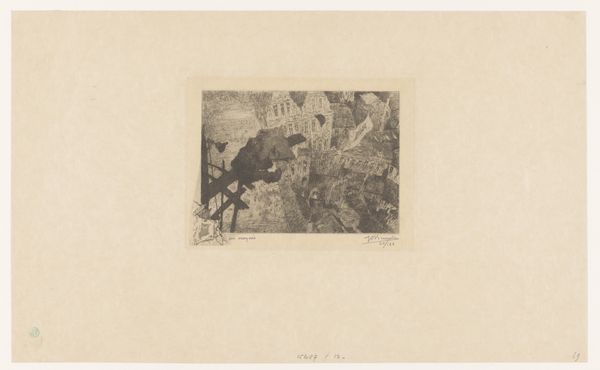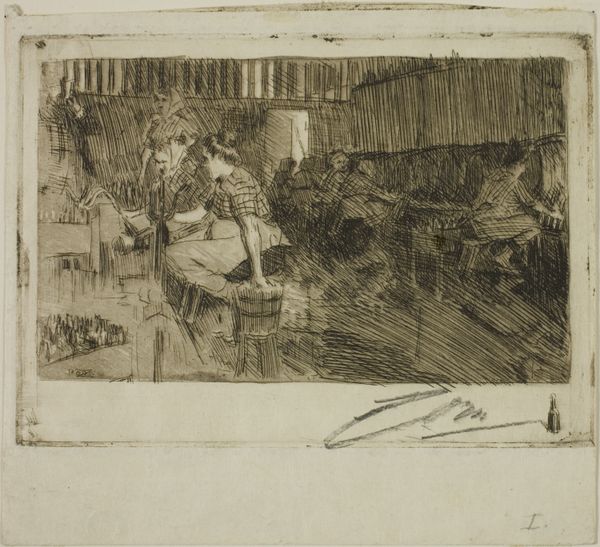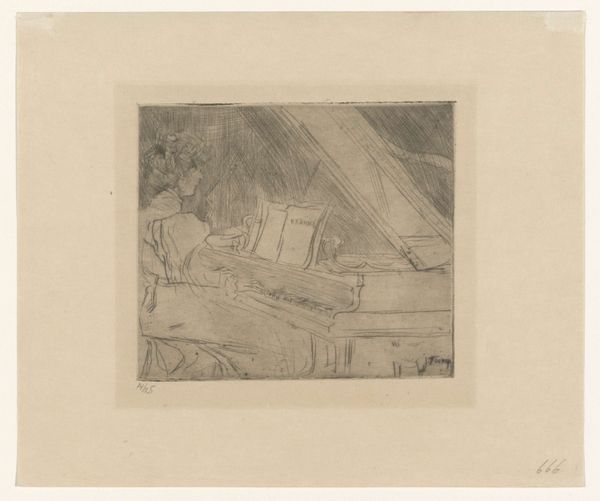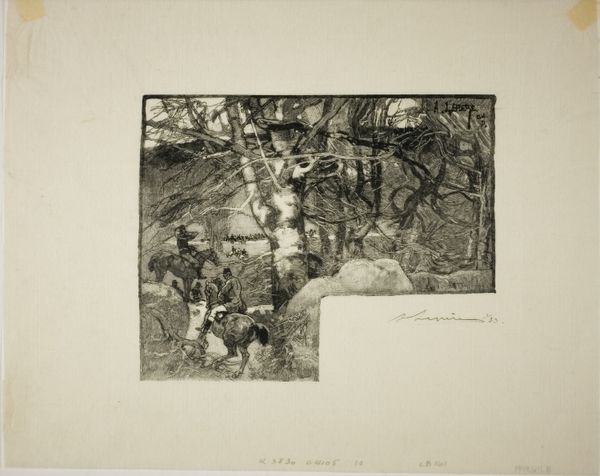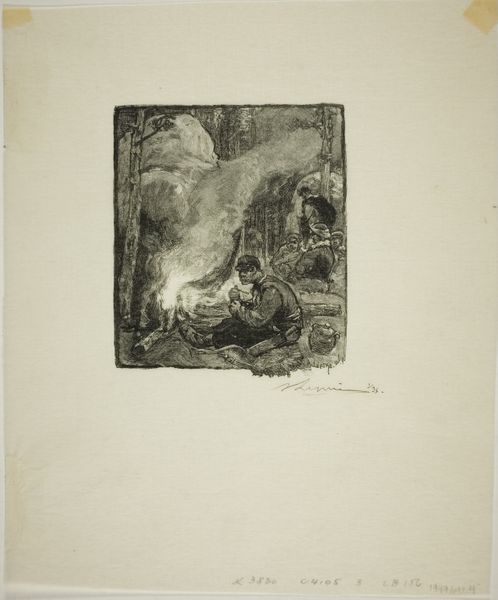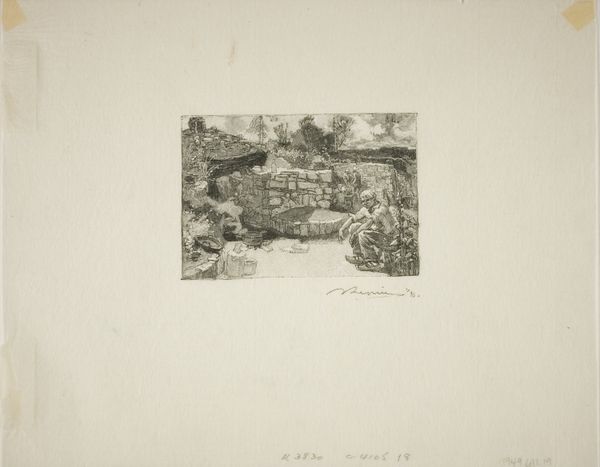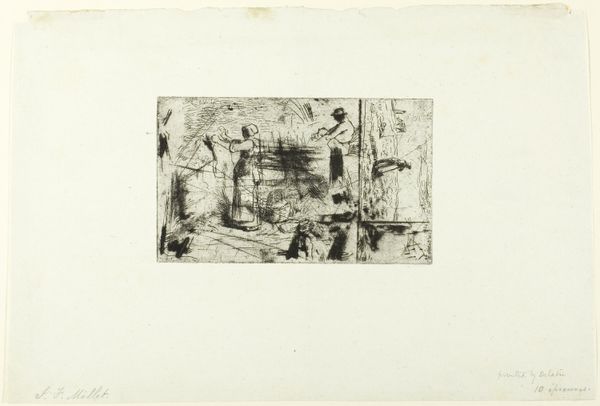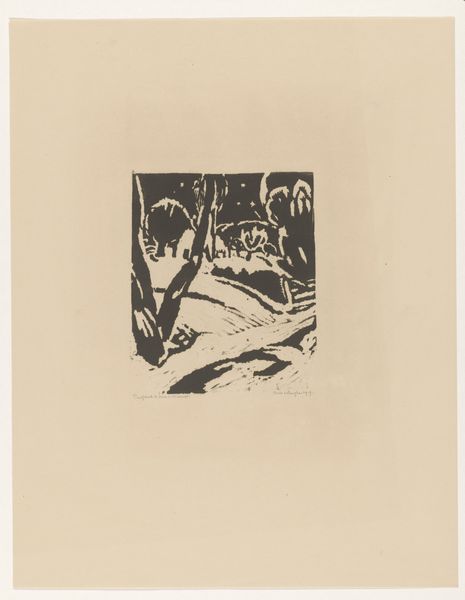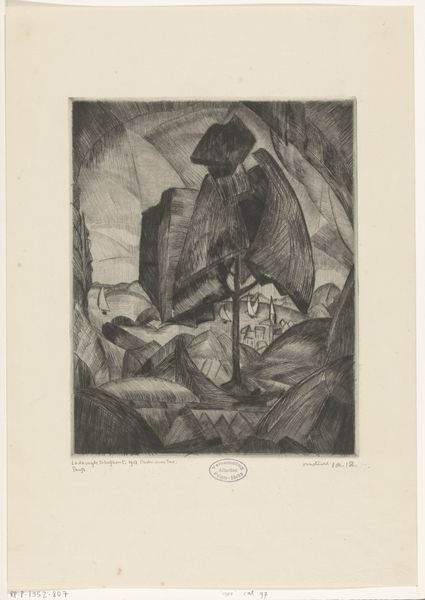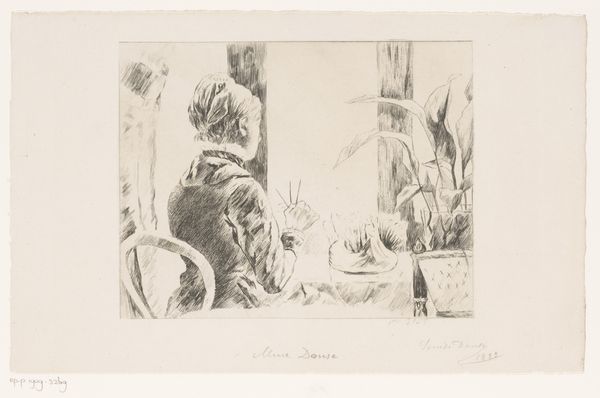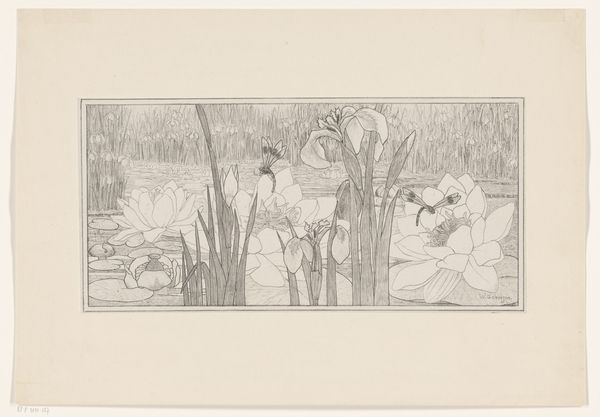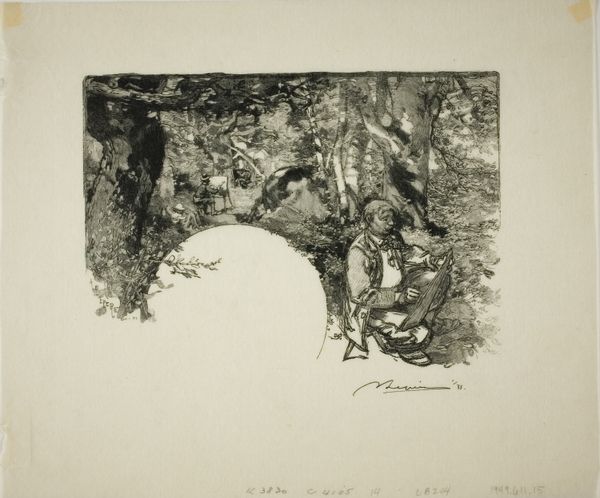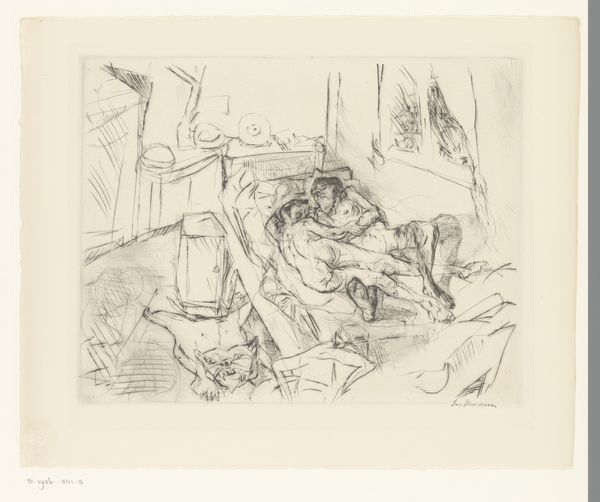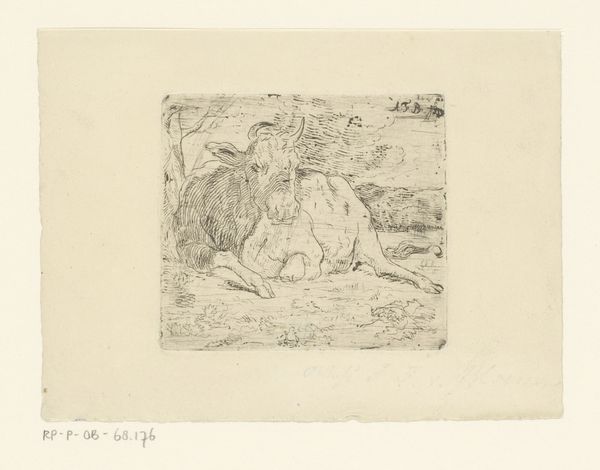
drawing, print, paper, engraving
#
drawing
# print
#
paper
#
history-painting
#
engraving
Dimensions: 75 × 96 mm (image); 183 × 209 mm (sheet)
Copyright: Public Domain
Editor: Here we have Auguste-Louis Lepère's "Lath-Makers," possibly created between 1888 and 1908. It's an engraving, a print on paper. The composition has a gritty realism to it, depicting laborers in what seems like a very arduous work environment. What historical context illuminates this scene for you? Curator: This image captures a critical moment in the transformation of labor at the turn of the century. Observe the setting – less a factory and more like an outdoor workshop. The absence of mechanization and the presence of hand tools situate this scene in the transition between artisanal craftsmanship and industrialized production. Editor: So, it's not just a picture of labor; it’s about a specific time of labor? Curator: Precisely. Lepère is not just documenting a profession; he's documenting a disappearing world. Consider the social role of such imagery at a time when the idealized image of progress often obscured the realities of working-class life. What does it mean to represent labor this way, instead of focusing on, say, technological innovation? Editor: I suppose it challenges the dominant narrative of progress, almost giving visibility to a workforce being left behind? Curator: Exactly. Artists at the time began depicting more truthful images. The way this print aestheticizes their toil and places it within the visual culture – raises important questions about the politics of representation itself. Is Lepère romanticizing poverty, or is he trying to imbue the laborers with dignity? Editor: This makes me look at the composition differently. It is as though he wants to remind the viewer that those traditional forms of making are still present. I wonder what it meant for people encountering this work back then. Thank you! Curator: My pleasure. Seeing art through this social and political lens allows us to consider its historical reception.
Comments
No comments
Be the first to comment and join the conversation on the ultimate creative platform.
